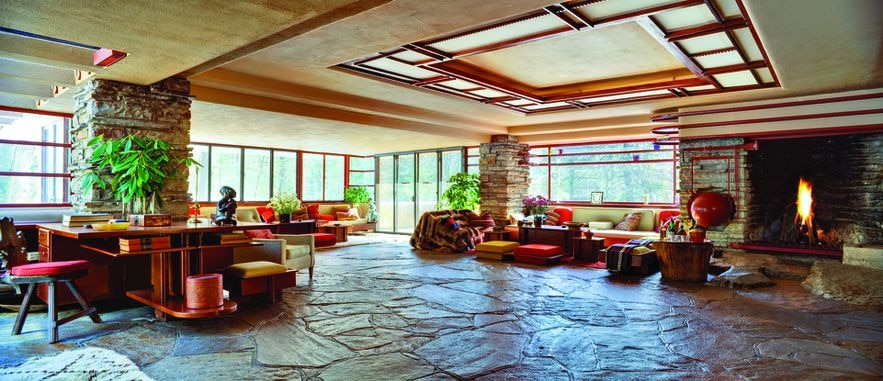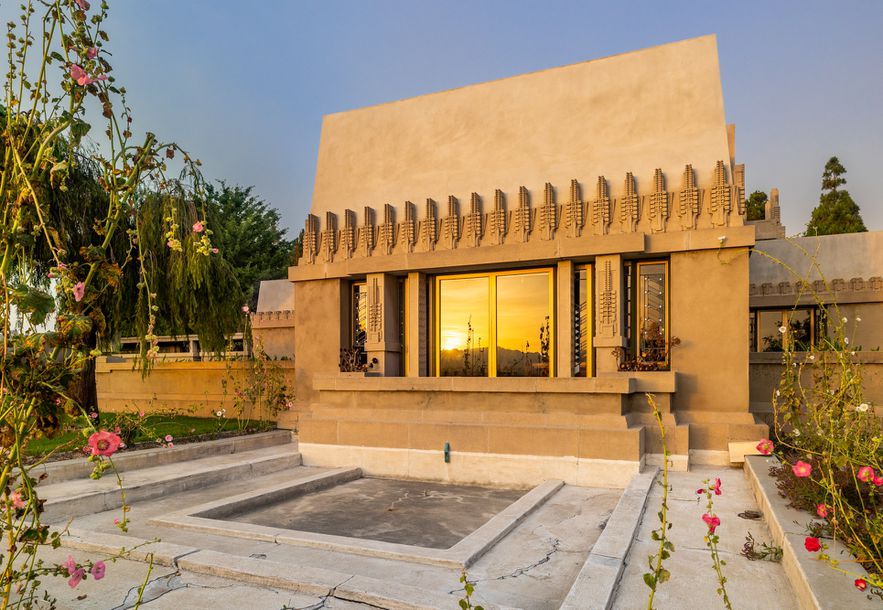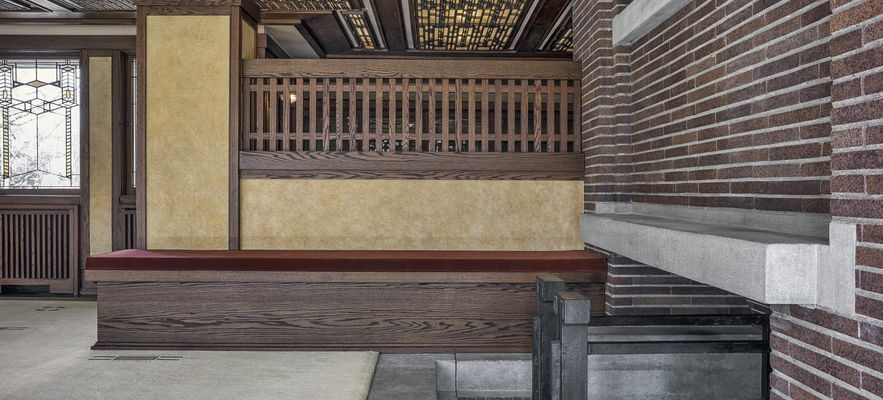Taliesin West (1937)
Camped in the foothills of the Arizona mountains, this exceptional dwelling was Frank Wright’s winter residence and his “desert laboratory”. Its strong connection to its environment gives it an almost prehistoric dimension. It is considered to be one of the most personal creations of the architect who set up his school there.
The Robie House (1909)
Robie House
© / JAMES CAULFIELD
Located on the picturesque campus of the University of Chicago (Illinois), this residence is typical of Frank Wright’s vision of a family residence. Its horizontal shape, the continuous series of windows and the layout of the rooms around a large central fireplace mark a break with the Victorian tradition of the time.
The House on the Waterfall (1935)

Fallingwater, view of living room
© / Christopher Little / Courtesy of the Western Pennsylvania Conservancy
An example par excellence of organic architecture, this house has revolutionized the design of a dwelling built on a natural site, in Pennsylvania. Constructed from sandstone and other materials found on the property, its open-plan interior space accentuates the feeling of immersion in the forest. Hitchcock will be inspired by it for Death on the heels, in 1959.
Hollyhock (1921)

Hollyhock House
© / COURTESY OF HOLLYHOCK HOUSE
This building in Los Angeles marks the break with the Prairie School and inaugurates an approach inspired by Japan and pre-Columbian civilizations. The inclination of the exterior walls at 85 degrees and their sculptures are reminiscent of Mayan temples, while the interior decoration multiplies Japanese details. The use of concrete reinforces its monumental aspect.
